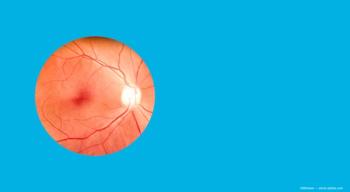
Ocular blood flow reflects systemic organ blood flow in hemorrhagic shock
Investigators found that non-invasive ocular blood flow measurement using laser speckle flowgraphy may be a new indicator of shock-related organ damage.
Reviewed by Kento Watanabe, MD, and Tomoaki Shiba, MD
An experimental study of hemorrhagic shock conducted in rabbits found that during progression of and recovery from shock, the blood flow in the eye shows decreases and increases similar to those seen in the kidney and intestines.
Noninvasive measurement of the blood flow in the eye may be a new indicator of shock-related organ damage, reported Kento Watanabe, MD, from the Department of Ophthalmology, Toho University School of Medicine, Tokyo, and Tomoaki Shiba, MD, from the Department of Ophthalmology, International University of Health and Welfare Narita Hospital, Funabashi, Chiba, Japan.
While shock is defined as the progression of organ disorders, it is difficult to evaluate using only parameters such as blood pressure.
Fundus examination is the only examination that facilitates direct observation of an organ’s blood supply, which reflects the true nature of shock.
Evaluation of the retinal vessels is a valuable resource because they have the same function and structure as the coronary and renal arteries, Watanabe explained.
Watanabe and his colleagues used laser speckle flowgraphy (LSFG) to study the relationship between whole body and ocular blood flow in small- and medium-sized animals and they found previously that the ocular blood flow index obtained using LSFG accurately reflects the blood pressure and cardiac output during shock, and that the ocular blood flow is larger than the rate of decrease in cardiac output (unpublished data).
In the study, shock was induced in 10 New Zealand white rabbits by removing blood at the rate of 1 mL/minute for 30 minutes; the animals were observed for 20 minutes and the blood returned.
During the period of shock, the mean arterial blood pressure (MAP) was measured in the brachial artery.
The blood flow in the intestines and kidneys was measured using an ultrasonic blood flow meter at the mesenteric artery and renal artery. LSFG was used to measure the ocular blood flow.
The mean blur rate (MBR), a blood flow index specific to LSFG, was measured in the retinal vessels and choroid. The rate of change of each parameter was compared with the baseline value before the blood was removed.
The investigators found that the MBR in the retinal vessels and choroid, the intestinal and renal blood flow, and the MAP decreased significantly as the blood was removed and recovered nearly to the baseline value when the blood was returned.
The rates of change at the end of the period of blood removal were as follows: MAP, 69.4%; kidney, 43.5%; intestine, 54.8%; MBR of the retinal vessels, 42.3%; and MBR of the choroid, 55.5%.
The rates of change between the MBR of the retinal vessels and kidney and between the MBR of the choroid and intestine were similar, and no significant difference was observed.
The MBR of the retinal vessels and MBR of the choroid were significantly positively correlated with the MAP (r = 0.87, 0.73), renal blood flow (r = 0.66, 0.59), and intestinal blood flow(r = 0.84, 0.61).
“In this study, the ocular blood flow reflected the blood flow in the kidneys and intestines,” the authors concluded. “The key takeaway point is that non-invasive ocular blood flow measurement using LSFG may be a new indicator of shock-related organ damage.”
--
Kento Watanabe, MD
E:
This article is adapted from Watanabe’s presentation at the Association for Research in Vision and Ophthalmology 2021 virtual annual meeting. He has no financial interest in this subject matter.
Newsletter
Don’t miss out—get Ophthalmology Times updates on the latest clinical advancements and expert interviews, straight to your inbox.













































.png)


